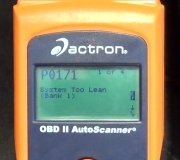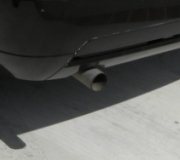I have already changed the fuel pump, filter, TPS and coil packs and ran my OBD again and it comes up with 3 lean codes, one O2 slow response code and P0401, which I have narrowed down to the sensor and will change soon.
I did some reading on some of your other forums here and it appears that a bad mass air flow sensor could be causing both the fuel delivery and the O2 sensor problem.
My question is- Is the mass air flow sensor circuit connected into the fuel delivery part of the computer to a point that it could shut off the fuel almost completely? I had thought that it kind of just adjusted the fuel flow slightly to optimize performance. I have spent quite a bit on parts trying to figure this out and those things are about $80. I will clean it very good tonight first, I have carb cleaner already at home but I don't want to buy yet another part if I don't have to.
If it is this, I am hoping it will solve both the RPM decrease adn the O2 sensor problem.
Also, the O2 code is sensor 1, bank 1. Which sensor is that in case I do need to replace it?
Thanks.
SPONSORED LINKS
Thursday, June 24th, 2010 AT 10:13 AM




